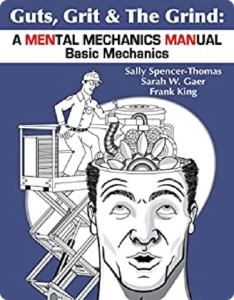Breaking the Silence: Suicide Prevention in the Construction Industry
The construction industry may often prioritize safety gear and protocols, yet it seldom emphasizes mental health, a critical part of workplace safety. In a recent conference, Frank King, a comedian who masterfully blends humor with tough topics like depression and suicide prevention, shed light on the pressing issue of suicide in the construction industry. Let’s delve into the insights and strategies discussed to combat this silent crisis.
Understanding the Statistics
Construction workers are now recognized as the most at-risk group for suicide, outranking other high-risk professions like physicians and veterinarians. Frank King highlights a significant statistic: out of every 8 suicides in the U.S., 6 are men, predominantly aged 45 to 54. This demographic aligns closely with the workforce in construction, creating a perfect storm for mental health issues to proliferate.
Unpacking Why Construction?
The construction industry is male-dominated, boasting a culture of toughness where vulnerability is often viewed as a weakness. Men in this field might avoid seeking help, preferring to “pull themselves up by their bootstraps.” Unfortunately, this cultural norm perpetuates a cycle of silence around mental health struggles and can delay intervention until it’s too late.
Breaking Down Stigmas with Humor
Frank King, with his unique comedic approach, stresses the importance of humor in discussing mental health. “Where there’s humor, there’s hope,” he quips, underscoring that laughter can be a catalyst for life. King’s personal journey through depression and his family’s history of mental illness demonstrate that vulnerability is not synonymous with weakness. Instead, it can forge connections that avert isolation—a major risk factor for suicide.
A Call for Proactive Measures
King advocates for upstream preventative measures in workplaces, urging companies to go beyond the usual active shooter drills and include mental health training. Recognizing symptoms of depression and intervening early can divert the path from depression to suicide. Engaging employees in mental health discussions and providing resources for conflict resolution can foster a supportive community that is vigilant and ready to help.
Empathy and Communication: Key to Prevention
Empathy can be challenging to muster, particularly for those who haven’t experienced mental health challenges. However, training in empathy is essential. It encourages listening and engagement without judgment, fostering an environment where employees feel safe to express their mental health struggles.
The Power of Conversation
One of King’s significant contributions is his ability to start the conversation around mental health. Many companies call upon him specifically to break the silence. His past experiences have shown that simply mentioning depression or suicide can open the floodgates for discussions that often save lives. Opening up a dialogue can dismantle stigmas and create an atmosphere where asking for help is seen as a normal, healthy action.
Providing Resources and Training
Employers can bolster mental health safety by offering resources like veterans’ suicide prevention hotlines and emergency response protocols. The use of QR codes with immediate access to suicide prevention texts or numbers during presentations is a small step towards larger interventions that could save lives.
Conclusion
The construction industry faces a heavy burden, but with leaders like Frank King, there is an opportunity to change the narrative. By championing mental health awareness, fighting stigma with humor, and training staff in preventative and supportive measures, construction companies can turn the tide on suicide rates. As King puts it, we need to look at prevention holistically and upstream, to ensure we are not merely reacting to tragedy, but actively working to prevent it.
Frank King’s approach is a call to action for the construction industry to encompass mental health under its safety umbrella, ensuring every worker gets home both physically and mentally safe.

